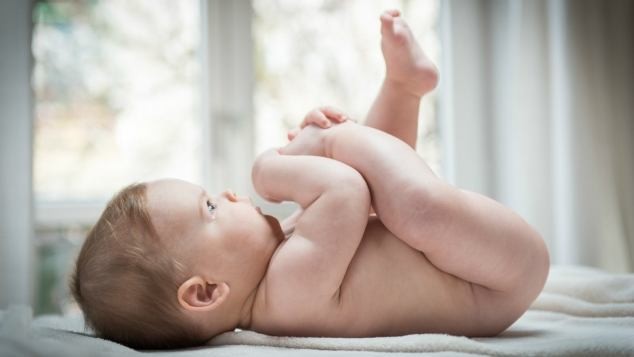Diaper Erythema: everything you need to know

Diaper erythema is a very common problem. Given the advantages, diapers used for a long time, and especially when it's hot and children sweat more, tend to irritate the skin creating redness, swelling, bubbles and real erythema called "diaper". Approximately 35% of children after the fifth month of age suffer. In the most common form the erythema can be mild or extended, in this case also affecting all buttocks.
But what does diaper erythema depend on?
The main causes can be:
- Repeated rubbing with diaper. Combined with sweat or stagnation of urine this can lead to maceration of the skin of the baby;
- Irritant effect from contact with urine and faeces. For example in case of diarrhoea;
- Irritation from reaction to detergents, perfumes, creams, diaper materials or, in the case of washable diapers, detergents used to wash them;
- For infections. The environment of the diaper is warm and humid, perfect for the growth of microorganisms such as bacteria, fungi and yeasts;
- Variations in power supply. The introduction of new foods can lead to changes in the consistency and composition of the faeces, which can be more irritating for the child.
How do I recognize my symptoms?
The erythema appears as a real scaly skin vent on the celeriac that can involve also the genitals and the rest of the skin area covered by the diaper. Redness may be associated with blisters, blistering or papules, or small solid reliefs. The lesions can tear, the skin can be literally eroded and the blisters can fill with pus. Smaller reddish spots, "satellite injuries", may also appear around large lesions. The erythema may be patchy or confluent. Usually it first involves the perianal region, but with the passage of time the irritation also extends to the surrounding areas. Depending on the case, in addition to the abdomen, sediment, genitalia and thighs, irritation may also involve the genitocrural folds (those between the genitalia and thighs), but generally does not extend beyond the area covered by the diaper.
How do you care?
- Keep the seat as dry and clean as possible;
- When erythema is not complicated by infections it can be handled more easily by using a weapon within everyone's reach: proper hygiene;
- It is necessary to change the diaper often, washing the baby at each change;
- After washing, the seat should be blotted with a soft, non-scratch towel;
- It may be useful to apply a thin layer of a soothing and protective cream. In the case of allergic contact dermatitis, it is essential to avoid the use of nappies containing the substances that trigger irritation;
- If using washable nappies, try changing the detergent;
- If the redness and irritation do not improve within 2-3 days, consult a doctor: infections may be occurring and the paediatrician will indicate the best treatments;
- In case of very severe dermatitis it would be good to let the baby's skin shine through as much as possible and, therefore, keep the baby without a diaper for a while every day;
- Grandmother's remedy par excellence is olive oil (or sweet almond oil) which soothes itching, burning and helps to heal irritation first. Just take a small amount and spread it on the area affected by dermatitis with each change of diaper.
Absolutely to avoid
It is absolutely necessary to avoid "do-it-yourself" and in particular the use of creams based on corticosteroids, because they can give side effects. On the one hand they can lead to an immediate improvement of the child, but as soon as its use is stopped erythema tends to recidivist and sometimes even worsen.
Can diaper erythema be prevented?
Sure that yes. The first rule of prevention is to keep your child's sediment always dry and clean. Therefore, you need to change the diaper often, and as soon as possible as soon as it is dirty. Wash your child well with water or, if necessary, a mild detergent every time you change the child. Dry the baby well after washing, dabbing with a soft towel and avoiding rubbing. Do not over tighten the diapers to facilitate the passage of air. And if you use washable nappies, always use neutral detergents, without perfumes or softeners.
Lucia Franco
How's the baby's skin supposed to be?
Newborn's skin should be pink and silky. In reality, this is not always the case, as the skin of the youngest is first of all very delicate, thin and therefore often the victim of attacks that..
ReadNewborn sweating:how it occurs, causes and remedies.
With the arrival of summer and rising temperatures we all suffer more from the heat, even babies. Even newborns sweat, and if the temperatures are too high you may notice some red bubbles on the baby's body; don't worry, it's..
Read

